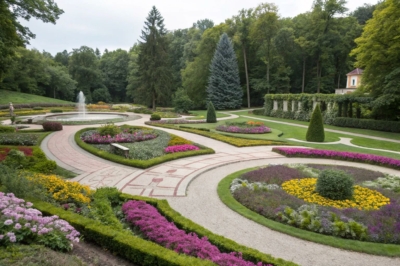1. Stone and Paver Accents
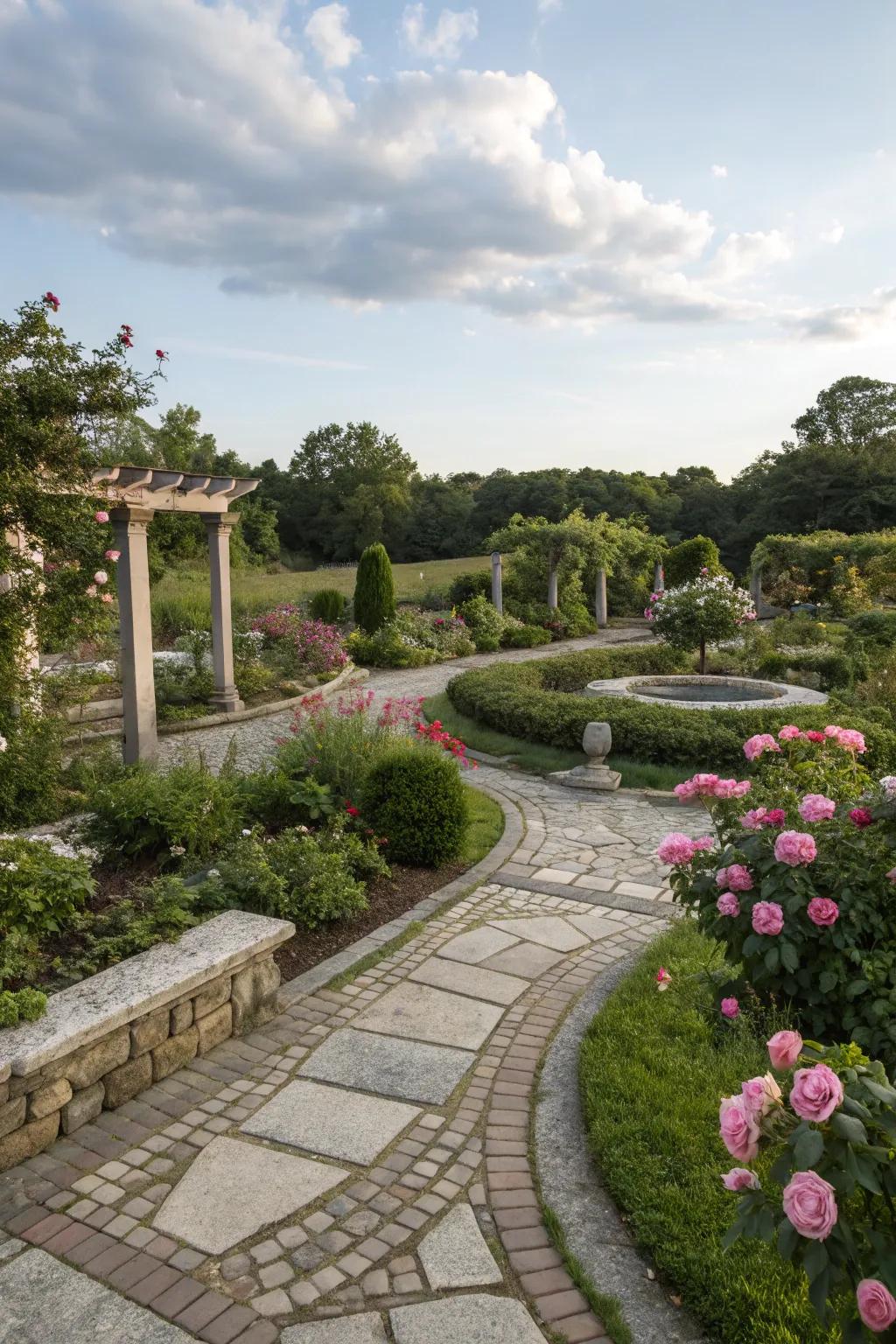
Using stones or pavers to outline areas in your garden can add a touch of elegance and structure. In my garden, they serve as both practical paths and artistic statements.
Might be a good match:
- Natural Stone Paver Kit: Transform your garden paths with these durable stones, adding elegance and structure effortlessly.
- Decorative Garden Edging Stones: Enhance your garden’s borders with stylish edging that provides both beauty and functionality.
- Interlocking Garden Pathway Pavers: Create stunning garden pathways with easy-to-install interlocking pavers for a cohesive look.
2. Creative Lighting
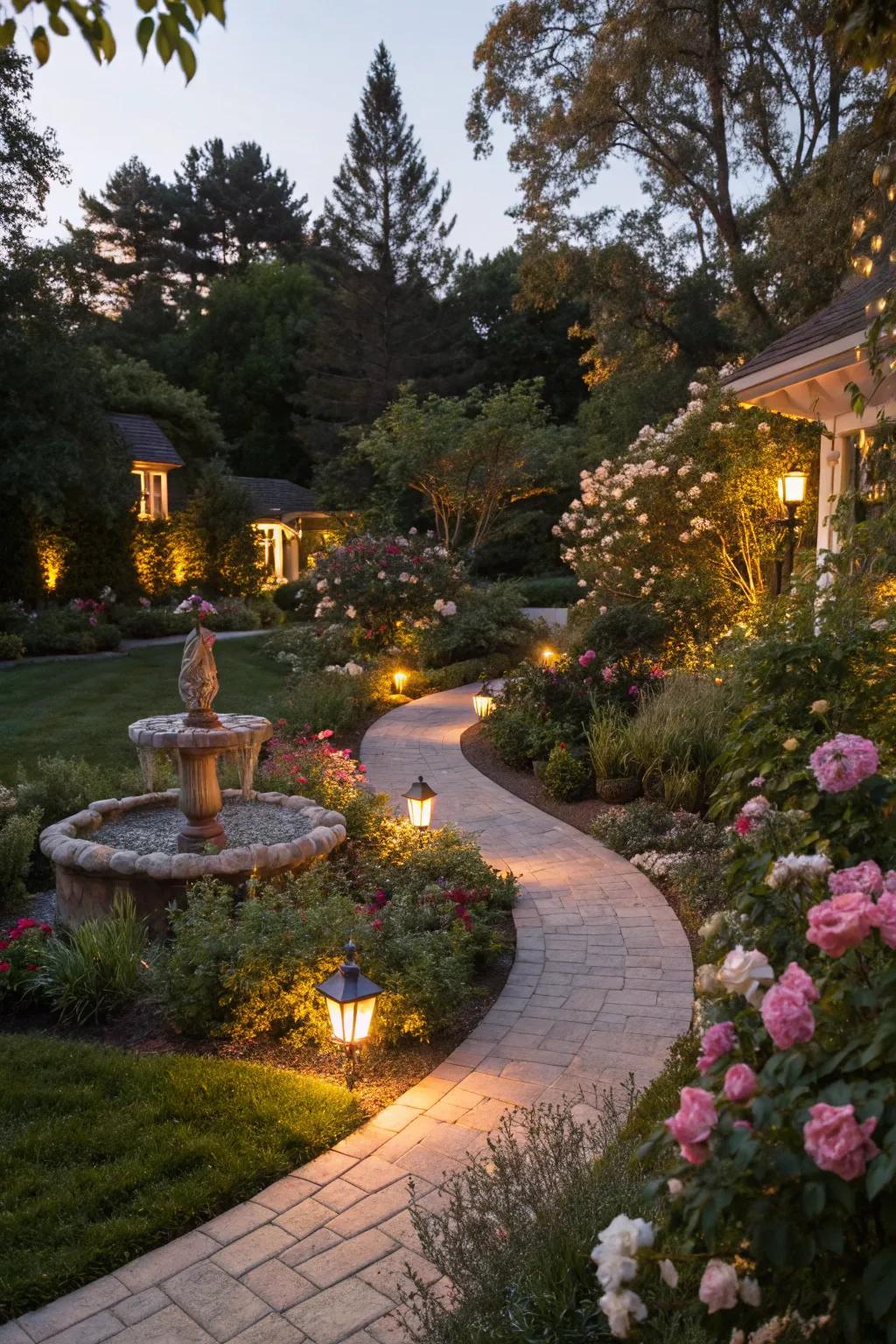
Lighting can transform your garden into a magical space at night. I love using soft, yellow lights to highlight my favorite spots.
A few relevant products:
- Solar Pathway Lights: Illuminate your garden path with eco-friendly solar lights for a warm, enchanting glow.
- LED Outdoor String Lights: Create a magical atmosphere in your garden with charming and energy-efficient string lights.
- Landscape Spotlights: Highlight your garden’s best features with adjustable spotlights for dramatic night-time effects.
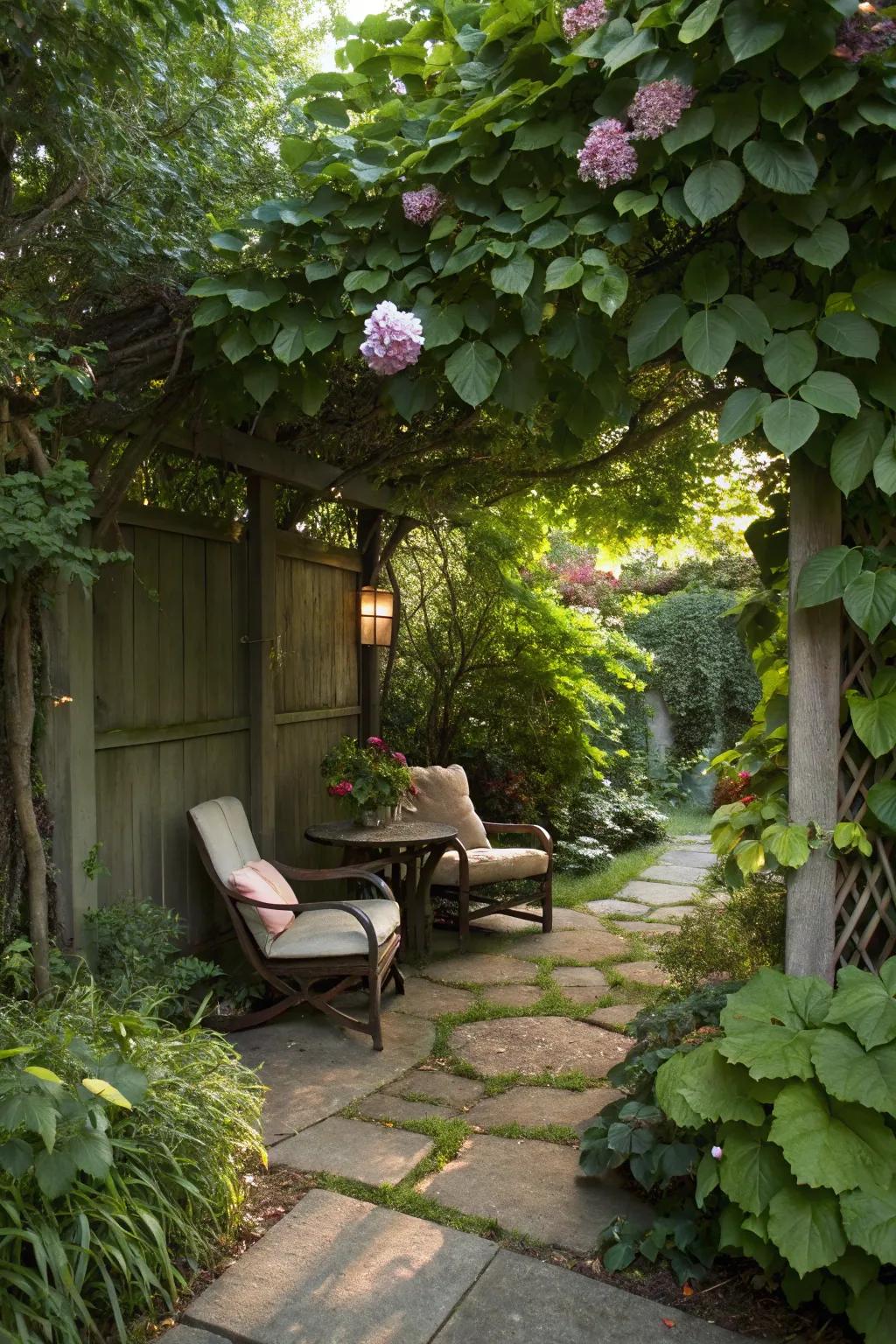
Creating hidden nooks can make your garden feel like a secret getaway. I have a small, secluded spot where I love to read and unwind.
Items that may come in handy:
- Outdoor Garden Chairs: Relax in style with comfy and weather-resistant chairs for your hidden garden retreat.
- Decorative Outdoor Lanterns: Enhance your nook with charming lanterns, creating a cozy and inviting atmosphere.
- Garden Trellis with Climbing Plants: Add lush greenery with a garden trellis, perfect for creating a secluded corner.
4. Natural Pathways

Creating pathways with natural materials like wood or gravel can blend your design seamlessly into the landscape. I find the crunch of gravel underfoot particularly satisfying.
A few things you might like:
- Wooden Garden Pathway Tiles: Enhance your garden path with these durable, natural wooden tiles for a rustic charm.
- Decorative Gravel for Paths: Create satisfying crunch underfoot and blend your pathway with the landscape using decorative gravel.
- Garden Pathway Edging Stones: Define your pathways beautifully with elegant and durable edging stones for a polished look.
5. Topiary and Structured Plants
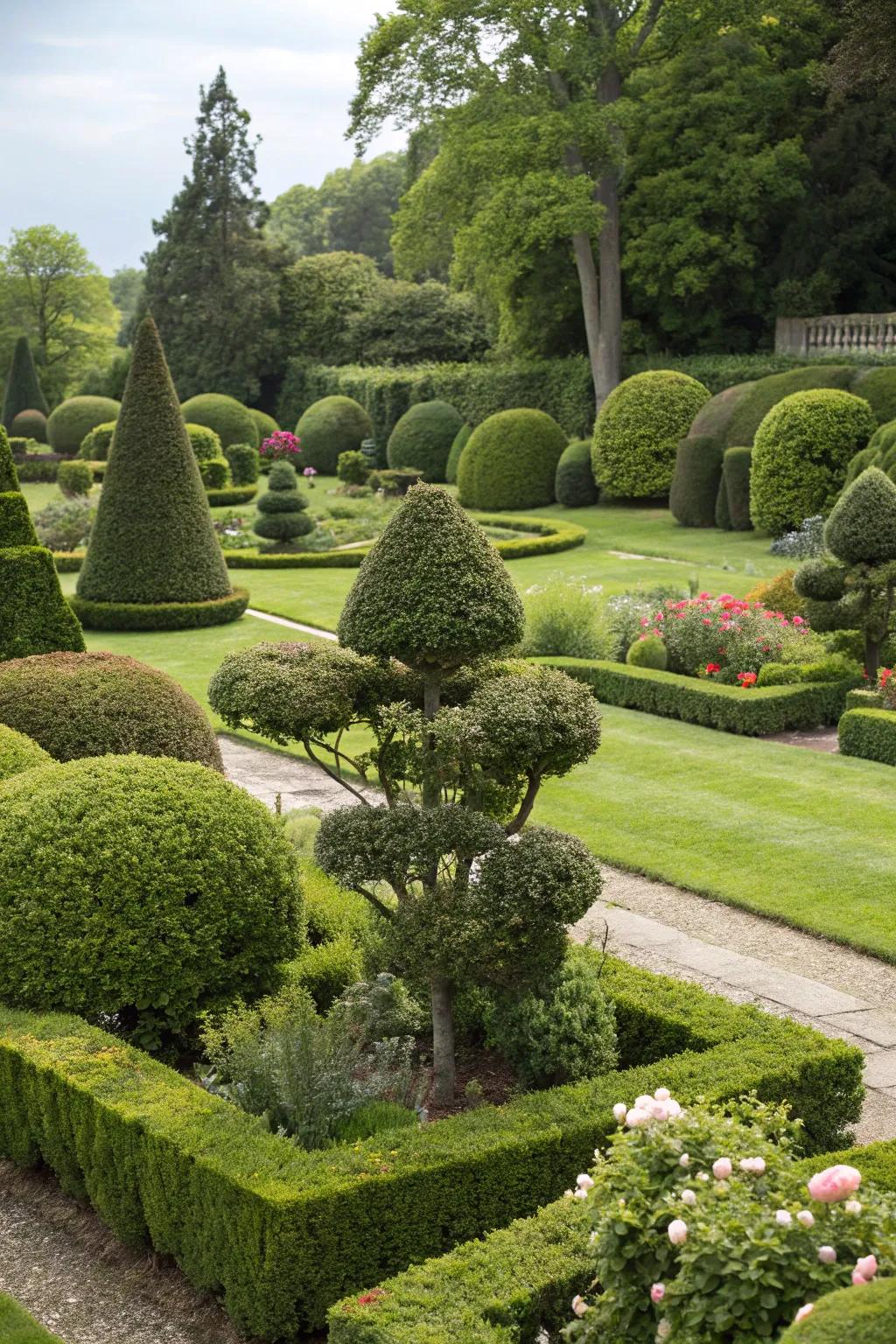
Topiary art brings a whimsical touch with neatly structured plants that stand out. Playing around with shapes keeps my garden looking fresh and intriguing.
Check if these fit your needs:
- Topiary Shears: Prune with precision and creatively shape your bushes into whimsical forms easily.
- Topiary Frames: Guide your plants into stunning shapes using durable and versatile topiary frames.
- Evergreen Shrubs: Plant evergreen shrubs that enhance your garden’s charm and resist seasonal changes.
6. Mixed Textures and Materials
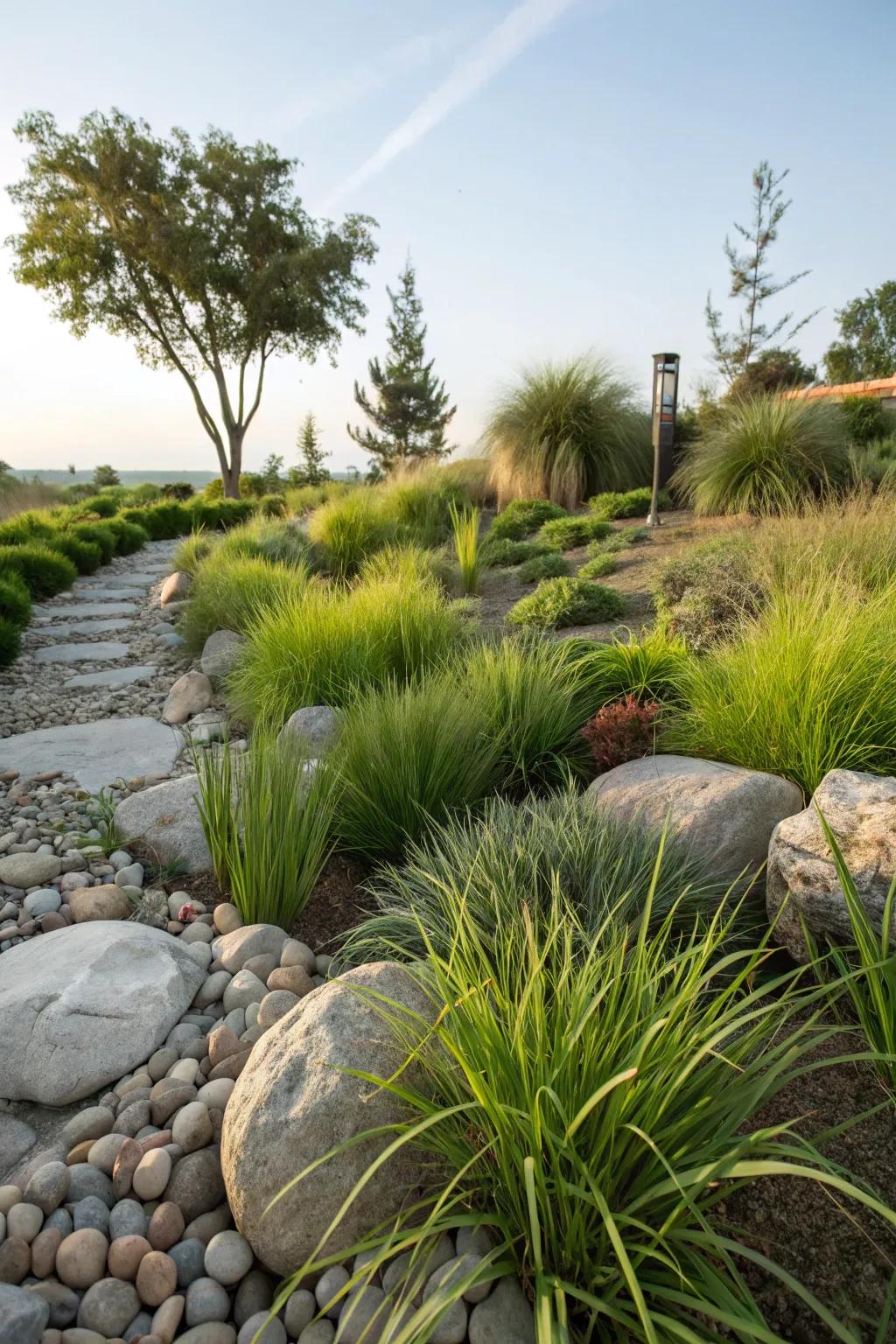
Combining different textures and materials can make your garden visually exciting. I enjoy mixing grasses with smooth stones for a delightful contrast.
A few suggestions:
- Decorative Smooth River Rocks: Enhance your garden paths with smooth river rocks for a natural, serene look.
- Ornamental Grasses Seed Pack: Plant diverse ornamental grasses for texture contrast and dynamic garden visuals.
- Garden Solar Path Lights: Illuminate your garden pathways with energy-efficient solar lights for an enchanting evening glow.
7. Curved Paths and Borders
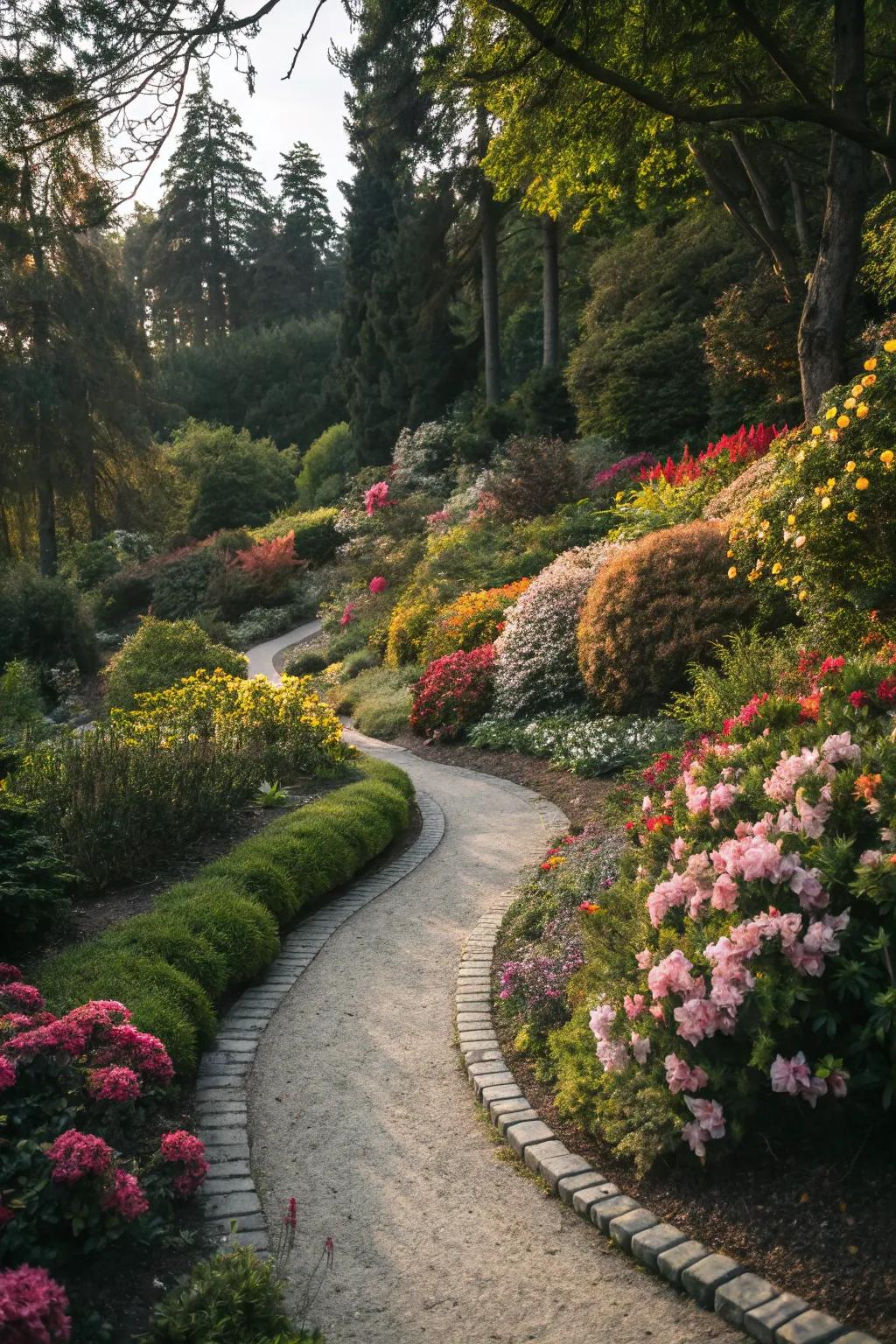
Curved paths create a sense of journey, making even a small garden feel expansive. I love winding through my garden, discovering new views with every turn.
Consider these options:
- Garden Path Edging Stones: Enhance your garden’s aesthetics with durable edging stones for a stylish, winding path.
- Flexible Garden Path Mold: Effortlessly create custom winding paths in your garden using versatile path molds.
- Decorative Outdoor Solar Lights: Illuminate your garden paths beautifully with energy-efficient solar lights that highlight every curve.
8. Seating Areas
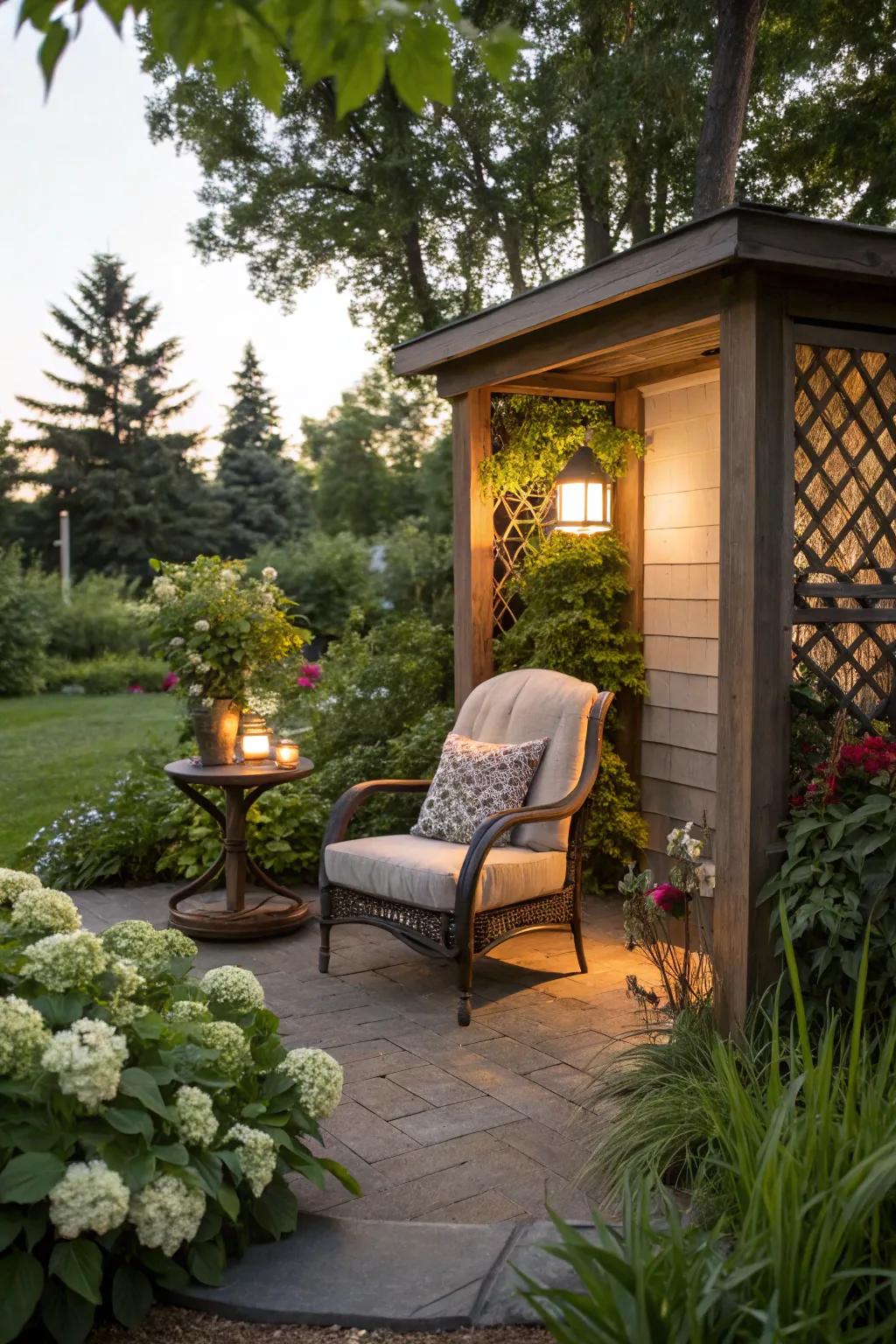
Integrating cozy seating areas into your garden invites relaxation and contemplation. My favorite spot is tucked away under a canopy of trees.
Useful items to consider:
- Outdoor Wicker Chair: Transform your garden space with a cozy wicker chair perfect for relaxing moments outdoors.
- Outdoor Side Table: Add an elegant side table to place your drinks and books while enjoying your garden retreat.
- Garden Lantern: Illuminate your seating area with a stylish lantern to create a warm, inviting ambiance.
9. Natural Elements
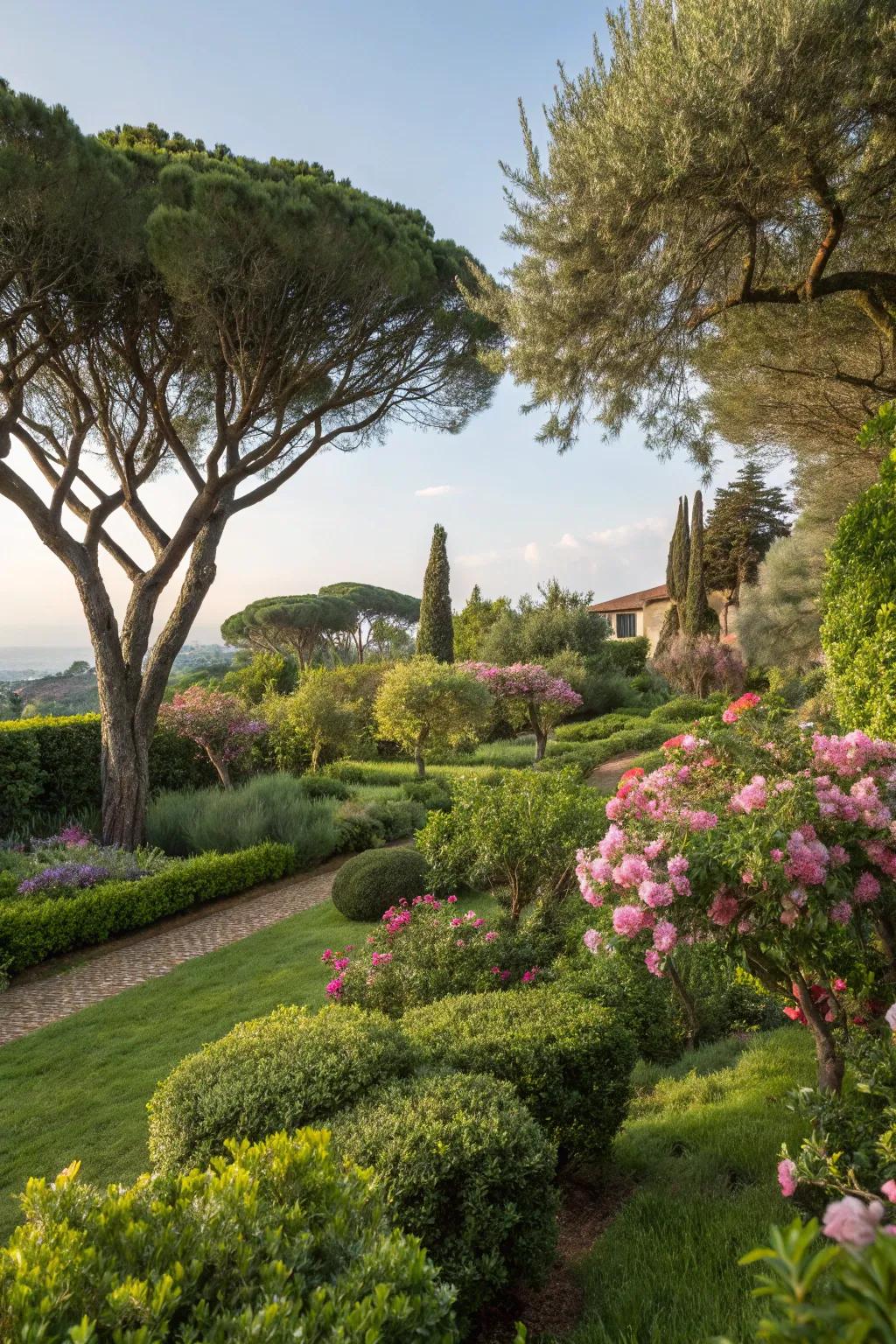
Incorporating trees and shrubs can add a sense of maturity and grounding to your garden. I love how they provide structure and seasonal interest.
Possibly helpful picks:
- Decorative Garden Arch Trellis: Enhance your garden’s entrance with a charming arch, perfect for climbing plants and vines.
- Solar Garden Lights: Illuminate pathways and highlight garden features with eco-friendly solar lights that charge by day.
- Wooden Raised Garden Bed: Create structured planting zones with a raised bed, ideal for flowers or small shrubs.
10. Circular and Spiral Shapes
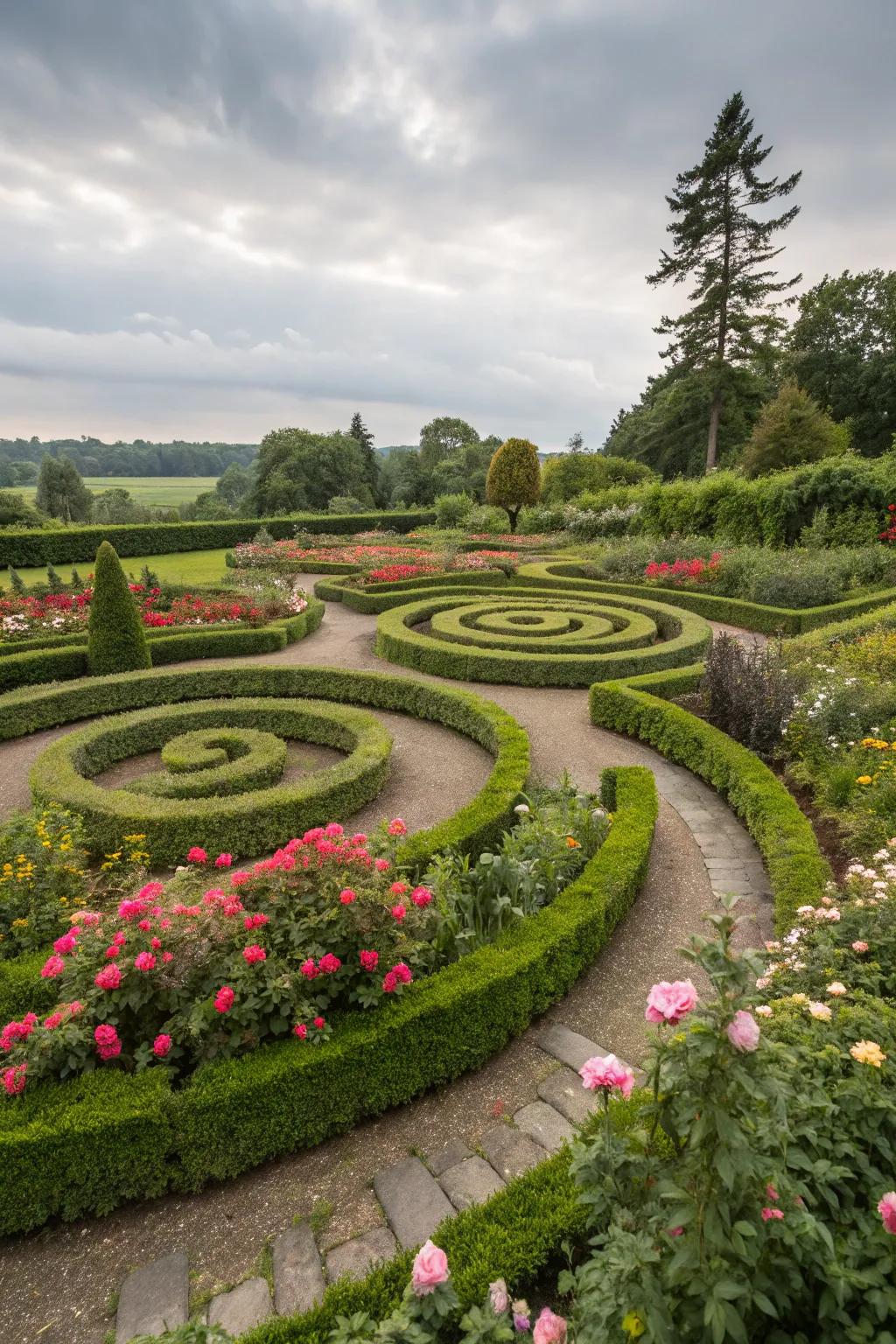
Circles and spirals can bring a sense of flow and continuity. In my garden, these shapes create intriguing focal points that draw the eye.
Possibly handy products:
- Garden Edging for Circular Designs: Enhance your garden’s flow with versatile edging for stunning circular and spiral arrangements.
- Outdoor Stone Labyrinth Kit: Create captivating focal points with an easy-to-build stone labyrinth for your outdoor space.
- Spiral Garden Planter: Add height and dimension with a spiral planter, ideal for showcasing vibrant blooms.
11. Water Features
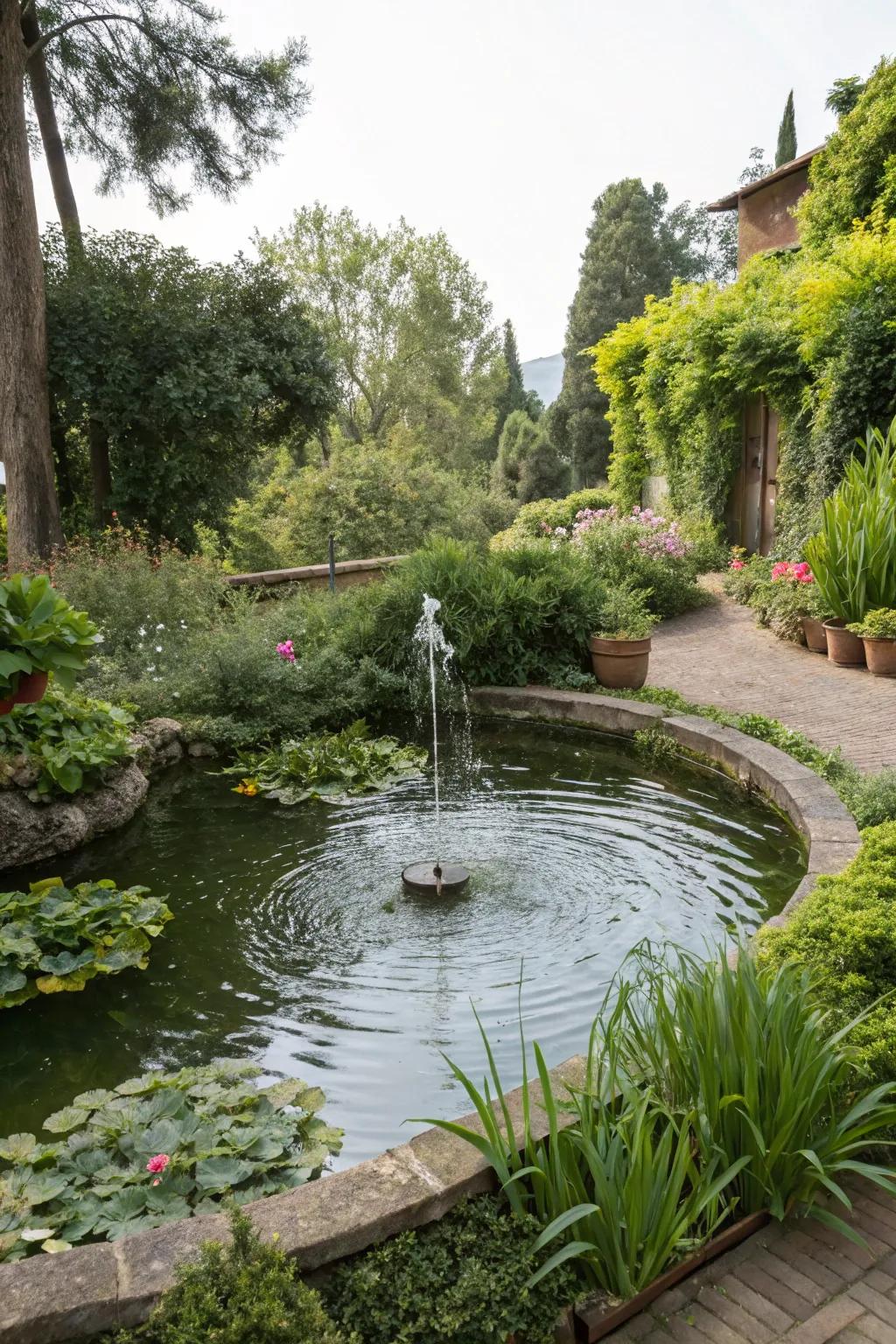
A small pond or fountain can bring tranquility and movement to your garden. Whenever I need a moment of peace, I find myself drawn to the gentle sounds of water.
Some ideas to consider:
- Outdoor Garden Pond Kit: Transform your space with a serene pond, inviting birds and soothing sounds to your garden.
- Solar-Powered Water Fountain Pump: Enjoy an eco-friendly fountain that adds tranquil movement and sound to your peaceful garden oasis.
- Water Lily Pond Plants: Enhance pond beauty naturally with vibrant water lilies for a lush and colorful aquatic environment.
12. Edible Landscaping
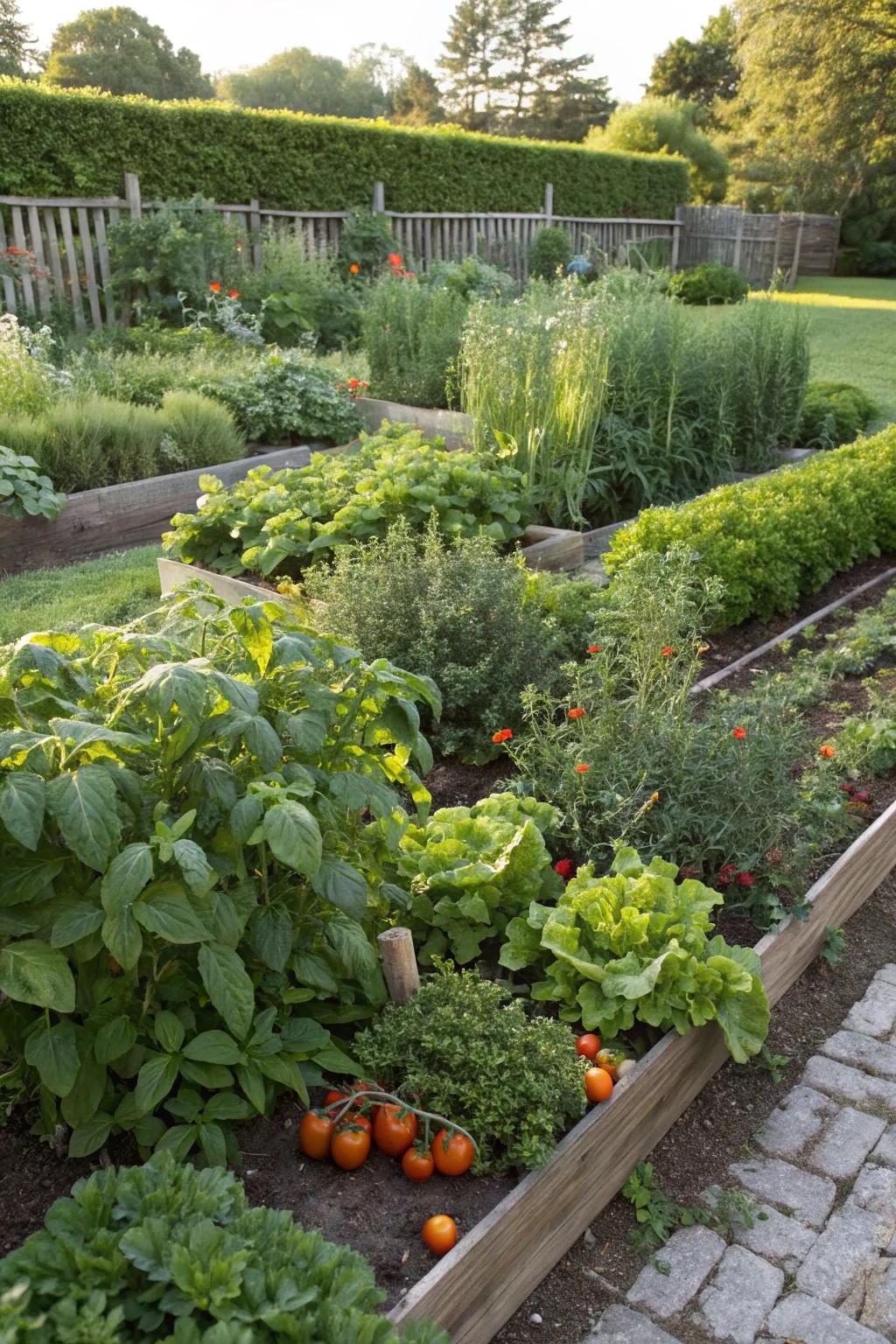
Incorporating edible plants can make your garden both beautiful and functional. I enjoy picking fresh herbs and veggies right from my backyard.
You might give these a try:
- Herb and Vegetable Planting Kit: Start your own garden paradise with easy-to-use planting kits for immediate growth success.
- Raised Garden Bed: Optimize garden space with durable, easy-to-assemble raised garden beds for better plant health.
- Organic Fertilizer: Boost your crops’ growth naturally with eco-friendly, nutrient-rich organic fertilizer.
13. Geometric Patterns
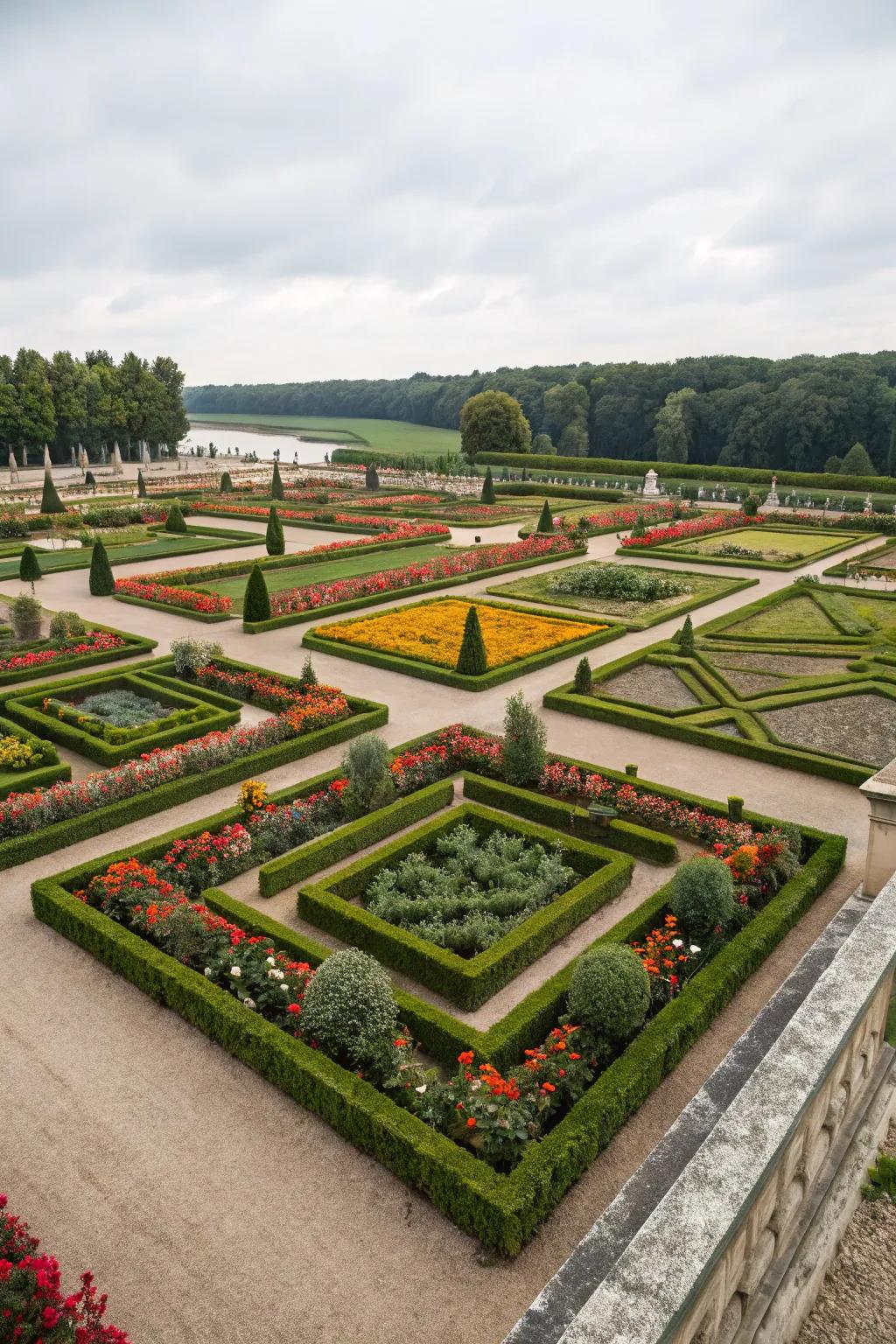
Incorporating geometric patterns can give your garden a modern edge. I often use squares and rectangles to create clean, defined areas.
You might like:
- Interlocking Garden Edging Panels: Define elegant garden spaces with ease. Create modern geometric patterns effortlessly.
- Square Garden Planter Boxes: Enhance your garden’s structure. Perfect for geometric landscaping designs.
- Rectangular Outdoor Paving Stones: Add clean lines to your garden pathways. Achieve that modern aesthetic quickly.
14. Colorful Flower Beds
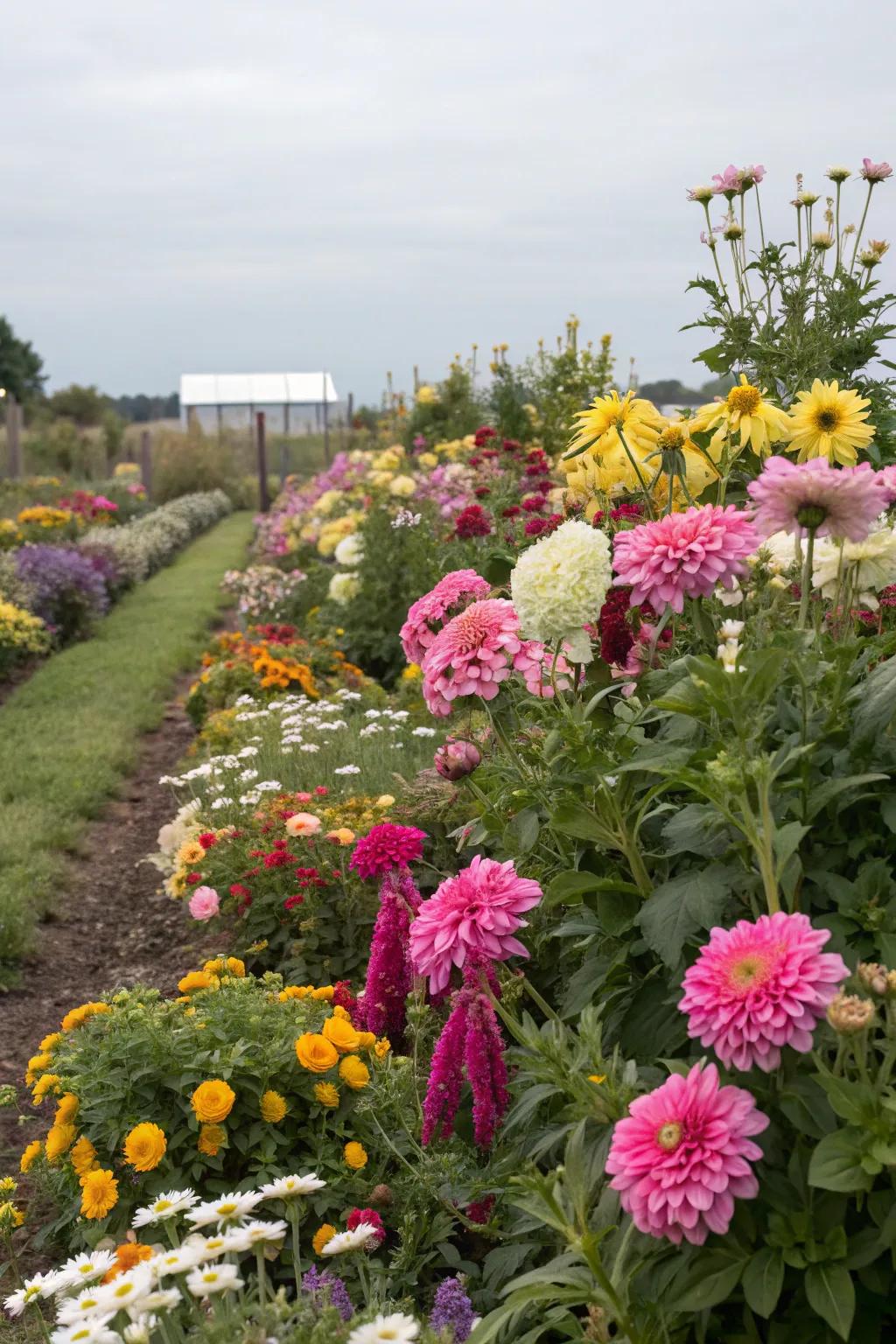
Mixing vibrant flowers in unique shapes can turn a dull corner into a cheerful focal point. I often experiment with different plant combinations to keep things lively.
A few choices to try:
- Perennial Flower Seed Pack: Cultivate vibrant blooms all year round. Add unique colors to your garden effortlessly.
- Decorative Garden Edging: Define your flower beds with stylish edging. Enhance visual appeal instantly.
- Garden Plant Markers: Easily label your plants to keep track. Never forget your favorite blooms again.
15. Reflective Surfaces
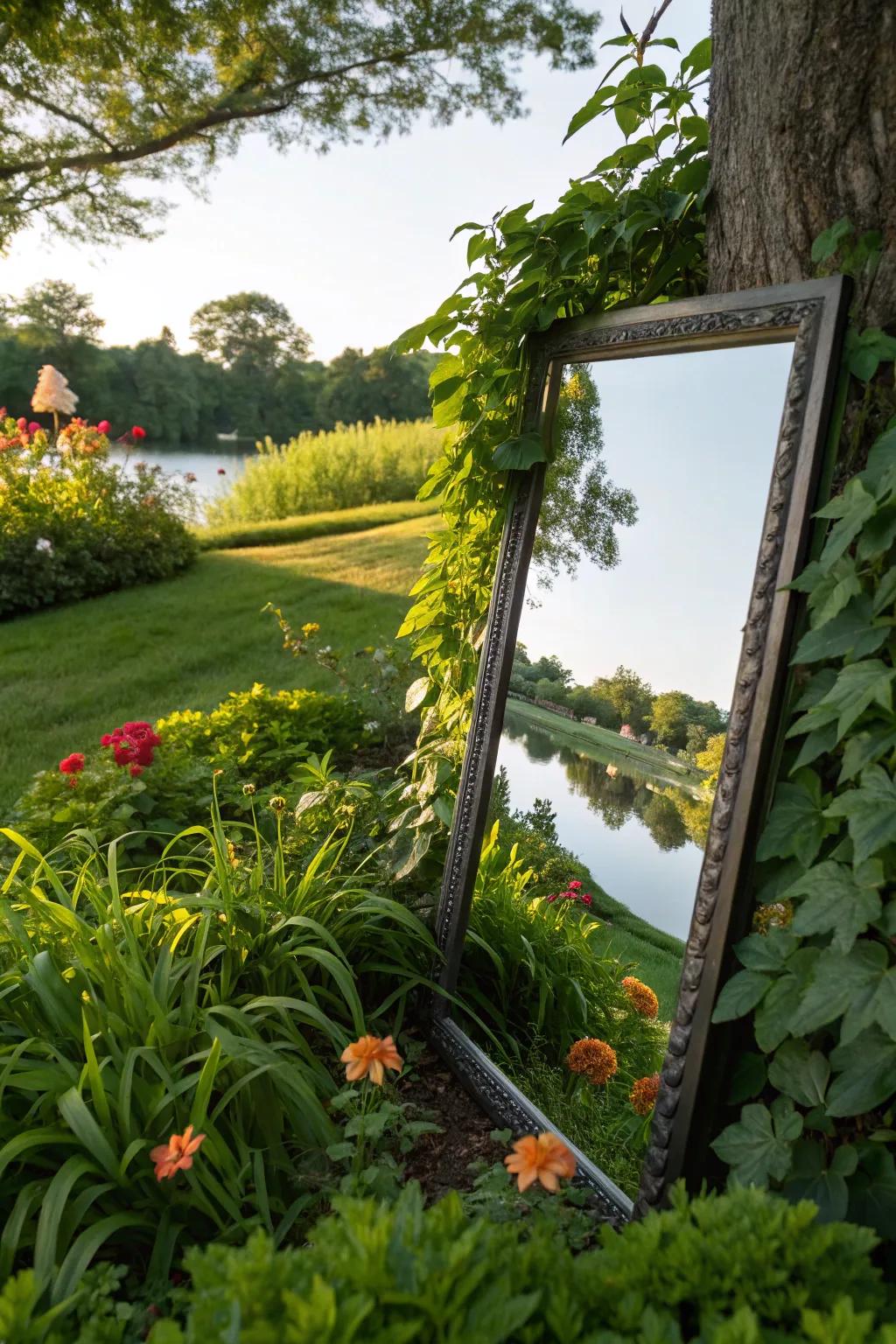
Mirrors or reflective surfaces can make your garden appear larger and brighter. I use a strategically placed mirror to reflect light and greenery.
Check these products out:
- Outdoor Garden Mirror: Enhance your garden’s beauty by reflecting light and creating depth with a stylish mirror.
- Weatherproof Reflective Sheeting: Brighten up garden spaces by installing versatile, weather-resistant reflective sheeting.
- Decorative Wall Mirror: Add elegance and light to your garden with a decorative mirror suited for outdoor use.
